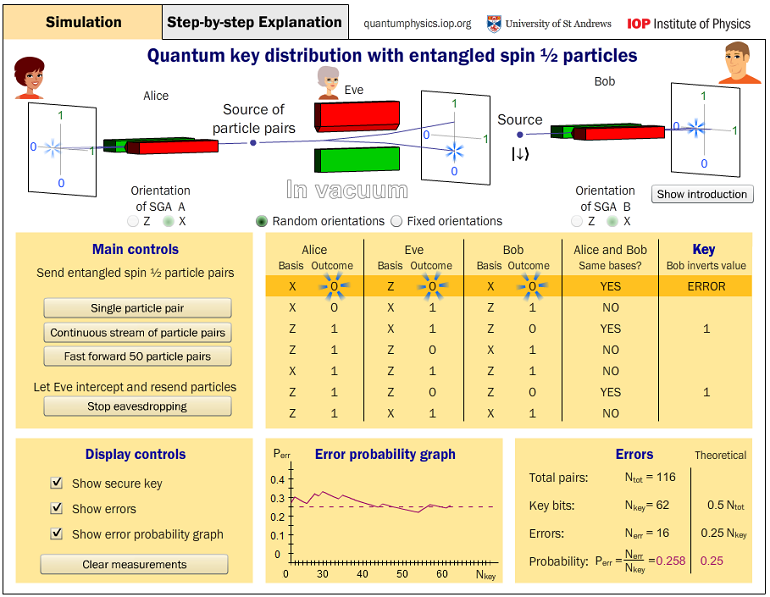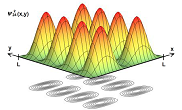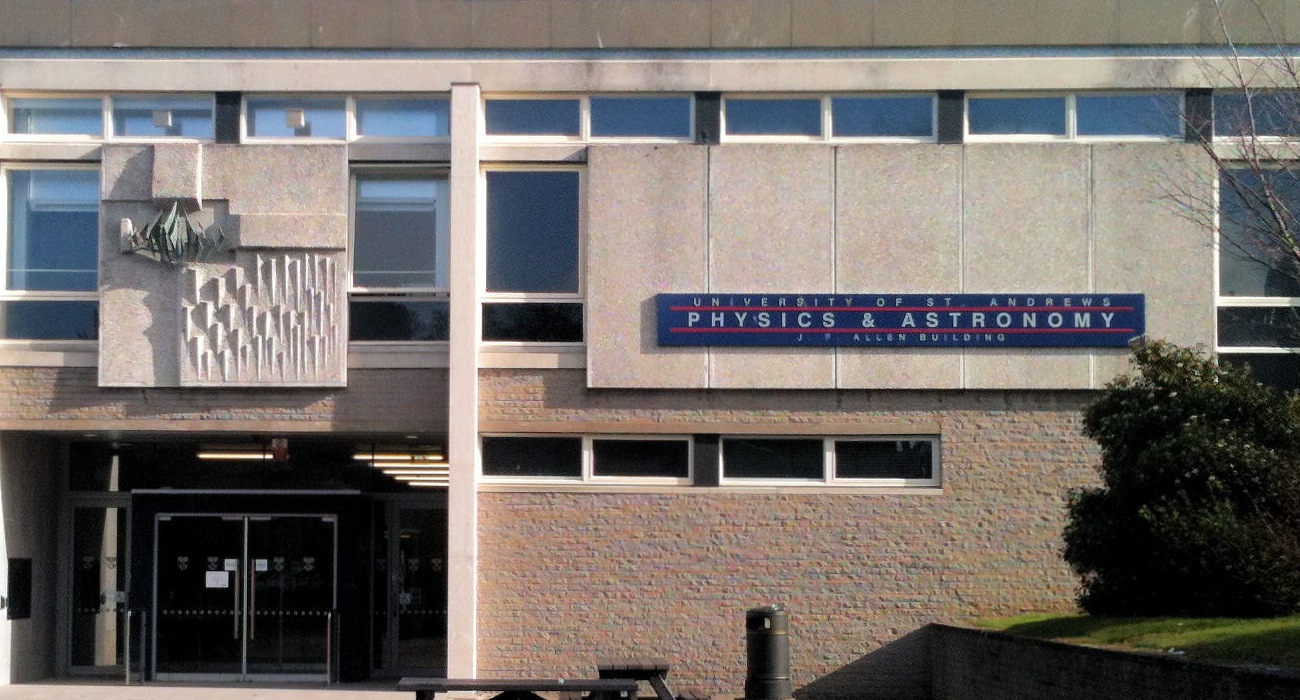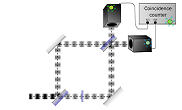Instructional Material
QuVis – interactive quantum mechanics simulations 
The Quantum Mechanics Visualisation Project (QuVis) consists of research-based interactive simulations for the learning and teaching of quantum mechanics concepts at university level. These resources are being developed with financial support from the Institute of Physics, the UK Higher Education Academy and the University of St Andrews.
Simulations are available on a wide range of topics ranging from the introductory to the advanced undergraduate level. Collections include simulations for the Institute of Physics New Quantum Curriculum (quantumphysics.iop.org), simulations for physics students and simulations tailored to chemistry students studying introductory quantum mechanics. Many simulations have accompanying activities, with solutions available for instructors.
Simulations build on existing education research and target areas of difficulty in quantum mechanics. Simulations and activities are evaluated with students using observation sessions and in-class use to optimize their educational effectiveness. They are designed to help students make connections between multiple representations, explore relationships between quantities and compare and contrast classical and quantum behaviour. Simulations can be used flexibly in a wide range of teaching environments.
The QuVis simulations were awarded the 2014 MPTL (Multimedia in Physics Teaching and Learning) Excellence Award and the 2015 MERLOT (Multimedia educational resource for learning and online teaching) Physics Classics Award.
Project contact: Antje Kohnle, ak81@st-andrews.ac.uk

Photonics Simulation Software for Teaching (Psst!)
This package of simulations was written to allow students to explore aspects of photonics. The material includes ray optics, Gaussian beam propagation, laser resonator design, laser amplification, Q-switching and relaxation oscillations in lasers, coherent effects in two and three level atoms, and three wave mixing for nonlinear optics. Although originally aimed at students on our taught postgraduate programme, the ray optics simulation is useful at first year level and we are aware of the laser resonator design being used in industry. Short teaching packages accompany the simulations.
Initial funding for the project came from the Scottish Higher Education Funding Council. The package was authored by Malcolm Dunn, Aly Gillies, Peter Lindsay, and Bruce Sinclair.
The material runs as a stand-alone package on a PC, and is freely available from
https://www.st-andrews.ac.uk/~psst/.
Contact: Bruce Sinclair, bds2@st-andrews.ac.uk

Modern Physics Course Materials (University of Colorado)
Modern Physics is the 3rd semester in a 3-semester sequence of introductory physics courses at the University of Colorado Boulder. Among the topics included in this collection of instructional materials (clicker questions, lecture slides, homework & exam problems, conceptual assessments) are: special relativity; photoelectric effect; atomic spectra and lasers; Bohr and deBroglie models; Stern-Gerlach measurements, entanglement & single-quanta experiments; matter waves and the Schrödinger equation; tunneling, α-decay, STM's; hydrogen atom and molecular bonding; conductivity, semiconductors, BEC.
These materials have been under development since 2005, with contributions from Charles Baily, John Bohn, Dan Dessau, Noah Finkelstein, Sam McKagan, Kathy Perkins, Chuck Rogers, Thomas Schibli & Carl Wieman.
Contact: Charlie Baily, crb6@st-andrews.ac.uk
Electrodynamics Course Materials (University of Colorado)
Electrodynamics is the 2nd semester in a 2-semester sequence of courses on advanced undergraduate electromagnetism at the University of Colorado Boulder. Among the topics included in this collection of instructional materials (clicker questions, lecture slides, homework & exam problems, conceptual assessments) are: Maxwell's time-dependent equations; ac circuits; conservation laws; EM waves in vacuum and media; potentials and gauge transformations; radiation; special relativity.
These materials have been under development since 2010, with contributions from Charles Baily, Andreas Becker, Mike Dubson, Ed Kinney, Tobin Munsat, Steve Pollock & Chuck Rogers.
Contact: Charlie Baily, crb6@st-andrews.ac.uk
Nuclear Physics Conceptual Survey (NPCS)
The Nuclear Physics Conceptual Survey (NPCS) is a multiple-choice conceptual diagnostic survey for nuclear physics, including the topics of radioactive decay, binding energy, properties of the nuclear force and nuclear reactions. The survey is suitable for use in introductory courses on subatomic physics, with many questions also suitable for the introductory modern physics level. The survey is based on common student difficulties in nuclear physics. Free-text responses were used to develop the multiple choice version.
For more details, see: Antje Kohnle, Stewart Mclean and Marialuisa Aliotta: Towards a conceptual diagnostic survey in nuclear physics, Eur. J. Phys. 32(1) 55 (2011).
Instructors can request a copy of the survey with solutions by emailing Antje Kohnle,
ak81@st-andrews.ac.uk






